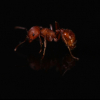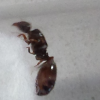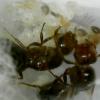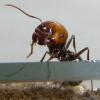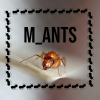So, my partner has little black ants in her kitchen every summer, in Ontario, Canada. She has been feeding them for like 14 years (drops of honey, pieces of fruit etc. on the kitchen counters). Because she was expecting to move out this Spring, she hasn't fed them because she doesn't want them to get used to friendly ant feeding humans this year and then get killed off by the next tenants who will likely not honor this arrangement. As a result, we haven't seen many of them and assumed they found an outdoor source of food.
Here's where things get strange. We were away for a couple of of weeks and came back to find dozens, if not hundreds of dead ants everywhere - in the sinks, on the floor, counters, up the stairs etc. We found many survivors that were missing limbs and antennae. Several were left with just 2 legs - one on each side. We gave mercy to the ones in the worst shape and prompty put out some honey for the survivors, incase this was due to starvation.
Does anyone know what would cause such a mass ant die off and so many missing appendages? Could they have been attacked by another colony? Are there diseases that do this? Would starvation do this? It's an old country kitchen, so they should easily be able to get outside for food. We are just so confused over this.
Edited by Dave, June 28 2015 - 8:51 PM.




